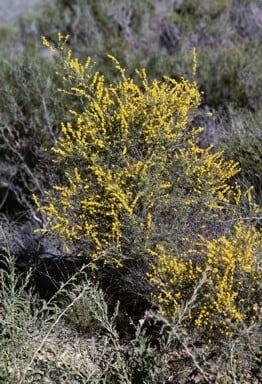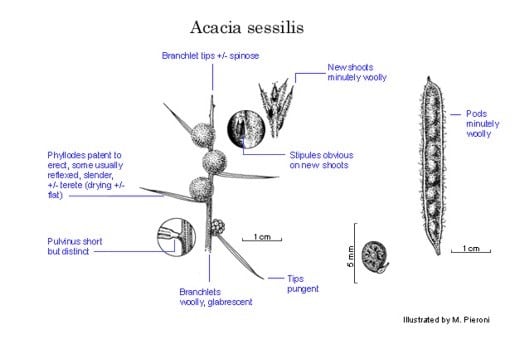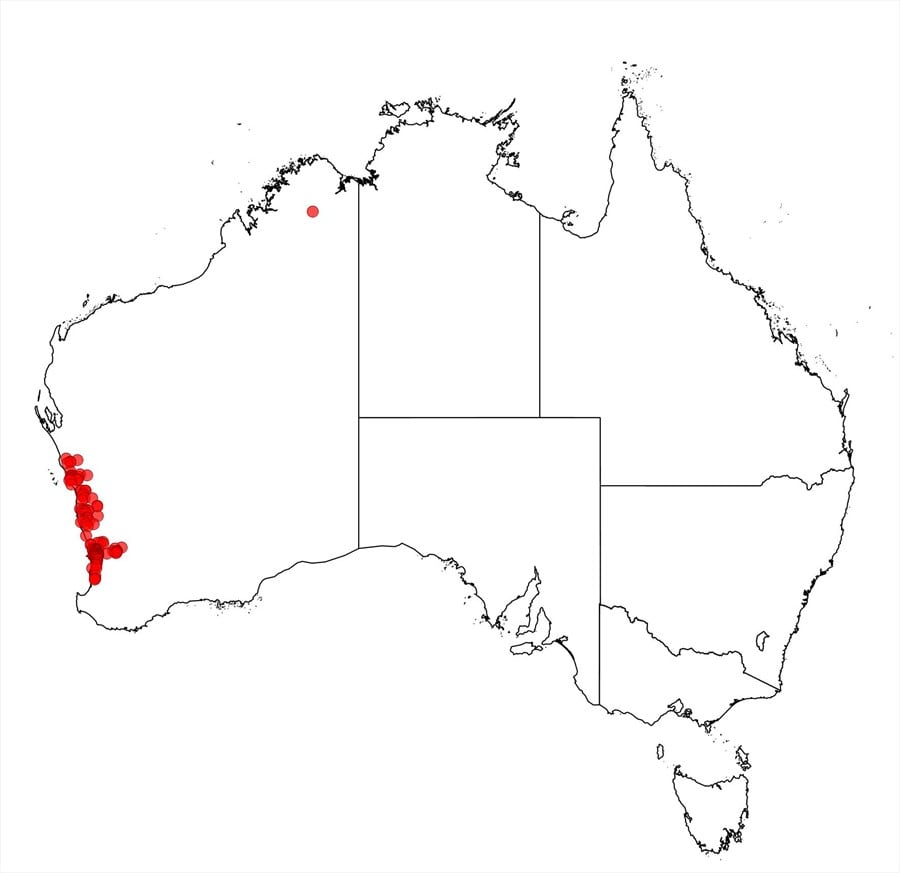Acacia sessilis Benth.
WATTLE
Acacias of Australia
Family
Fabaceae
Distribution
Occurs from Kalbarri Natl Park S to Yarloop, south-western W.A.
Description
Diffuse shrub to c. 1 m high. New shoots minutely woolly. Branchlets ±spinose, minutely woolly, glabrescent. Stipules caducous but obvious on young new shoots, joined nearly to apex. Phyllodes patent to erect with some usually reflexed, usually acicular and terete to subterete, compressed to flat when dry, 7–25 mm long, usually 0.6–1.3 mm wide, pungent, rigid, green, with indumentum as on branchlets, usually 5-nerved with the 2 adaxial nerves coalescing 0.5–4.5 mm above pulvinus, 1- or 3-nerved per face when flat; pulvinus short but distinct. Inflorescences rudimentary 1-headed racemes with axes > 0.5 mm long; peduncles 0–3 mm long; heads globular, 18–24-flowered, golden. Flowers 5-merous; sepals free, variably minutely woolly. Pods linear, to 5 cm long, 3.5–5 mm wide, crustaceous, minutely woolly; margins thick. Seeds longitudinal to oblique, normally broadly elliptic, c. 2.5 mm long, turgid, narrowed at periphery, mottled; aril small.
Habitat
Grows in sand or lateritic sand, in heath, sedgeland or low woodland.
Specimens
W.A.: 6 km S of Kalbarri turn-off on North West Coastal Hwy, R.S. & R.A.Cowan A832 (CANB, K, NY, PERTH, US); Swan R., J.Drummond 301 (BM, G, K, MEL, P, PERTH, W); near Yarloop, F.W.Went 237 (PERTH); Gnangara road, c. 24 km due N of Perth, B.R.Maslin 2802 (K, PERTH).
Notes
Normally the phyllodes are terete to subterete and 5-nerved with the 2 adaxial nerves coalescing in the region of the gland. Upon drying these phyllodes flatten and have a central nerve on each face. A naturally occurring flat phyllode variant is found E of Leeman (e.g. C.Chapman 2, PERTH) and this has narrowly oblong-elliptic phyllodes c. 10 mm long, 2 mm wide, with 3 nerves per face; this variant resembles A. erioclada which has shorter, 1-nerved phyllodes and narrower pods.
Phyllode morphology of the typical variant closely resembles A. acuaria which is distinguished by glabrous or puberulous-hirsutellous branchlets, united sepals and strongly curved to once-coiled pods. Related to A. benthamii.
FOA Reference
Data derived from Flora of Australia Volumes 11A (2001), 11B (2001) and 12 (1998), products of ABRS, ©Commonwealth of Australia
Author
B.R.Maslin
This identification key and fact sheets are available as a mobile application:
URL: https://apps.lucidcentral.org/wattle/
© Copyright 2018. All rights reserved.










